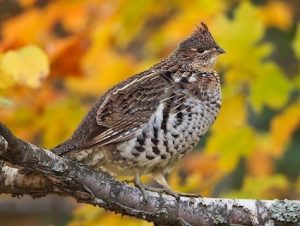 Figure 1) Ruffed Grouse (Bonasa umbellus)
Figure 1) Ruffed Grouse (Bonasa umbellus)
The ruffed grouse (Bonasa umbellus) is the most widely distributed resident game bird in North America (Johnsgard 1973). Belonging to the order Galliformes, the ruffed grouse is related to chickens, turkeys, pheasants, and quails (Collicutt n.d.). The Ruffed grouse is a non-migratory bird that lives year-round in deciduous and coniferous forests throughout North America, spanning from as far north as central Alaska and as far south as northern Georgia (Rusch et al. 2000). The ruffed grouse depends on shrub-dominated and young forest habitats for protection against predators (Dessecker and McAuley 2001). In the winter, ruffed grouse have been known to burrow into the snow to avoid detection by predators and to help conserve heat (Ruffed Grouse Society 2017).
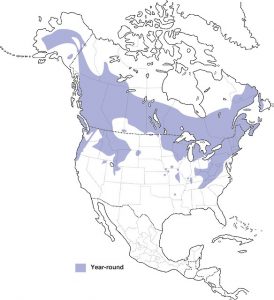 Figure 2) Ruffed Grouse Home Range
Figure 2) Ruffed Grouse Home Range
The scientific name Bonasa umbellus comes from the Latin word bonasa meaning “good when roasted” and umbellus meaning “umbrella” referring to the black tuffs on their neck (Collicutt n.d.). The ruffed grouse occurs in two colour morphs; gray and red with intermediates occurring between (Rusch et al. 2000). The gray colour morph predominates in the colder northern parts of its range and the red morph more predominating in milder climates in the south of its range (Rusch et al. 2000). These grouse also have a conspicuous black band on the tail (The Cornell Lab of Ornithology). Males and females are very similar in appearance and are often difficult to distinguish, however, males are often slightly larger than females with larger neck ruffs and most often (though not always!) have an uninterrupted black band around their tail as well as a longer tail (Arkive n.d.). The average size of ruffed grouse is comparable to a medium-sized chicken.
Figure 3) Red (top) versus grey (bottom) colour morphs
This grouse is primarily a ground-dwelling bird, spending most of their time foraging for buds, leaves, berries, seeds, and insects (Collicutt n.d.). Without the help of the distinct drumming sound it can be quite difficult to spot a Ruffed Grouse because of their quiet nature and cryptic colouration, however, when alarmed they may explode into flight with loud burst of wingbeats, often starling hikers!
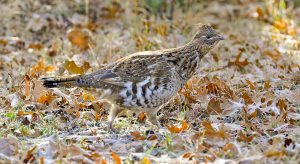
The Ruffed Grouse is perhaps best known for the distinct drumming sound -much like an engine trying to start- produced by the male. It can come as a surprise that the unique sound, comes from a bird (Cornell Lab of Ornithology)! The sound is produced by the bird quickly rotating its wings forward and backward, creating a miniature vacuum that generates a deep thumping sound wave that can be heard from long distances (Cornell Lab of Ornithology).
The ruffed grouse is fairly common and widespread throughout North America is listed as of least concern by the International Union for Conservation of Nature (IUCN) (Cornell Lab of Ornithology). Because the ruffed grouse is a popular game bird species, harvests are monitored and controlled by bag limits, season lengths, and area closures (Rusch et al. 2000).
References
Arkive (n.d.) The Ruffed Grouse. [Internet] Accessed from: http://www.arkive.org/ruffed-grouse/bonasa-umbellus/
Collicutt, D. (n.d). Nature North. [Internet].Accessed from: http://www.naturenorth.com/winter/grouse/rgrouse2.html
The Cornell lab of Ornithology: All About Birds. Ruffed Grouse. [Internet]. Available from: https://www.allaboutbirds.org/guide/Ruffed_Grouse/id
Dessecker, D.R., McAuley, D.G. (2001). Importance of early successional habitat to ruffe grouse and American woodcock. Wild life Society Bulletin, 29(2), 456-465
Johnsgard, P.A. (1973). Grouse and quail of North America. University of Nebraska, Lincoln, USA.
Rusch, D. H., Destefano, S., Reynolds, M.C., Lauten, D. (2000). Ruffed Grouse (Bonasa umbellus), version 2.0. In The Birds of North America (P. G. Rodewald, editor). Cornell Lab of Ornithology, Ithaca, New York, USA.
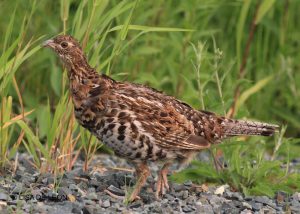
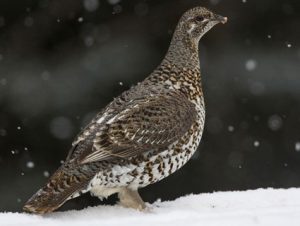
Great post Megan! Your visuals complemented the text very well! I enjoyed reading about the origin of their scientific name and learning about the males drumming displays in your second blog post. Do you know why there are two different colour morphs in the Ruffed Grouse? Does this provide them with some sort of advantage beside camouflage?
Thank-you Chanelle! I believe the two colour morphs evolved just for camouflage. The grey colour morph that predominates in the northern part of its range camouflages into the snowy landscape whereas the red colour morph occurring in the southern part allows the grouse to camouflage well under the thicker understory of shrubs and saplings. As you can imagine, the red colour morph would really stand out in a snowy landscape and allow for easy detection by predators.
I really enjoyed this post Megan! These are definitely interesting birds. Did you find anything about their family or social structure? I often come across ruffed grouse when I am out hiking and there never seems to be just one. If I spot one on a trail there are always others around as well. I’ve seen upwards of about 10 of them all together before.
Thank-you Nicole! They are normally solitary in their social behaviour. The males and females do not pair-bond and the male will mate with more than one female during the mating season. You’ve most likely seen a hen and her chicks while hiking! A clutch ranges in size from 9-12 chicks. The hen is highly parental and will take care of them for approximately 16 weeks until they are ready to disperse.